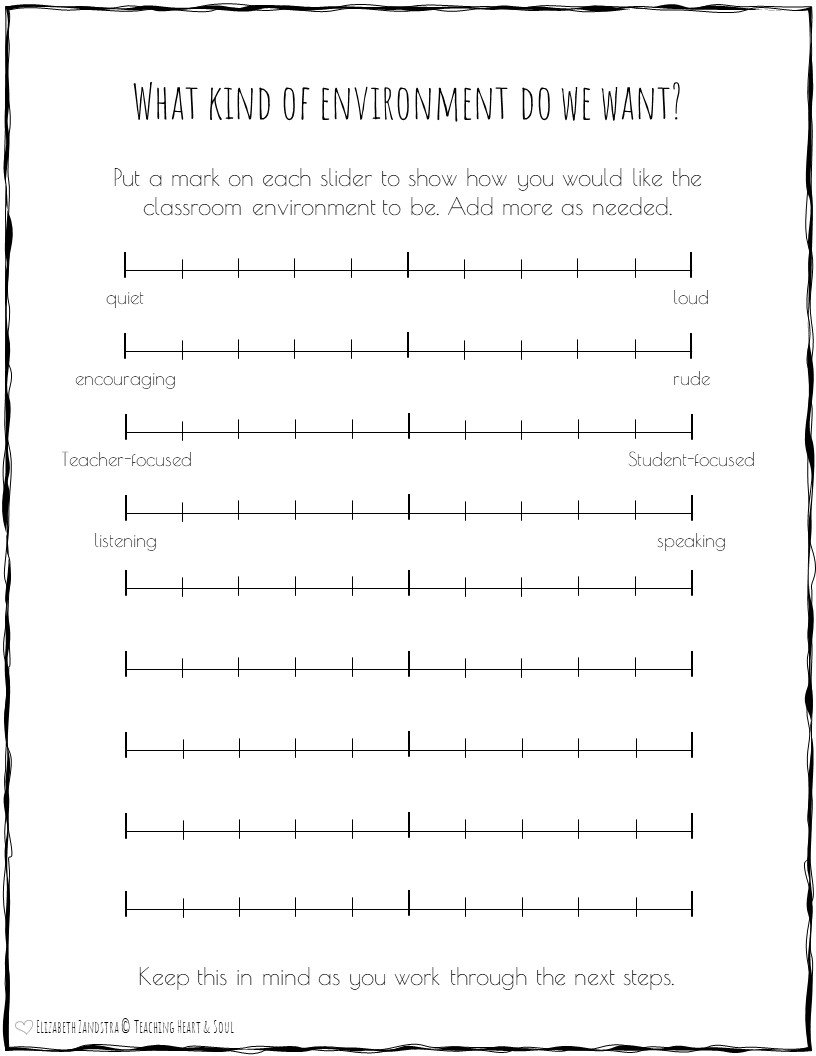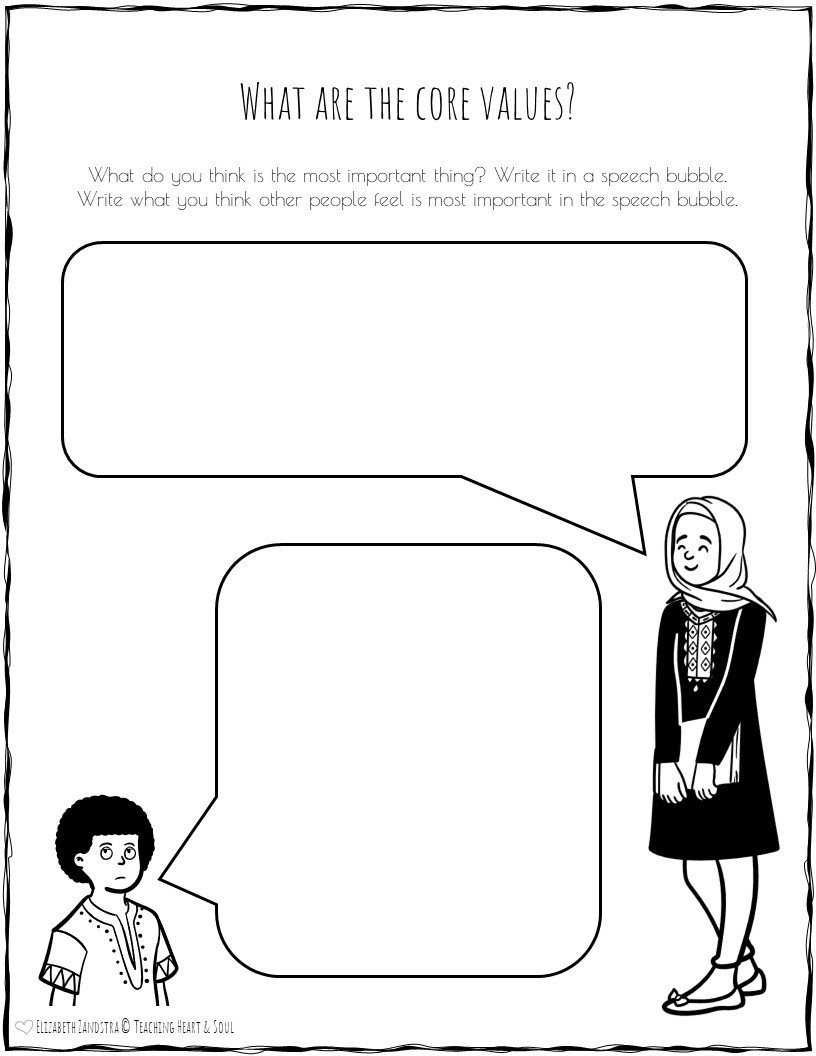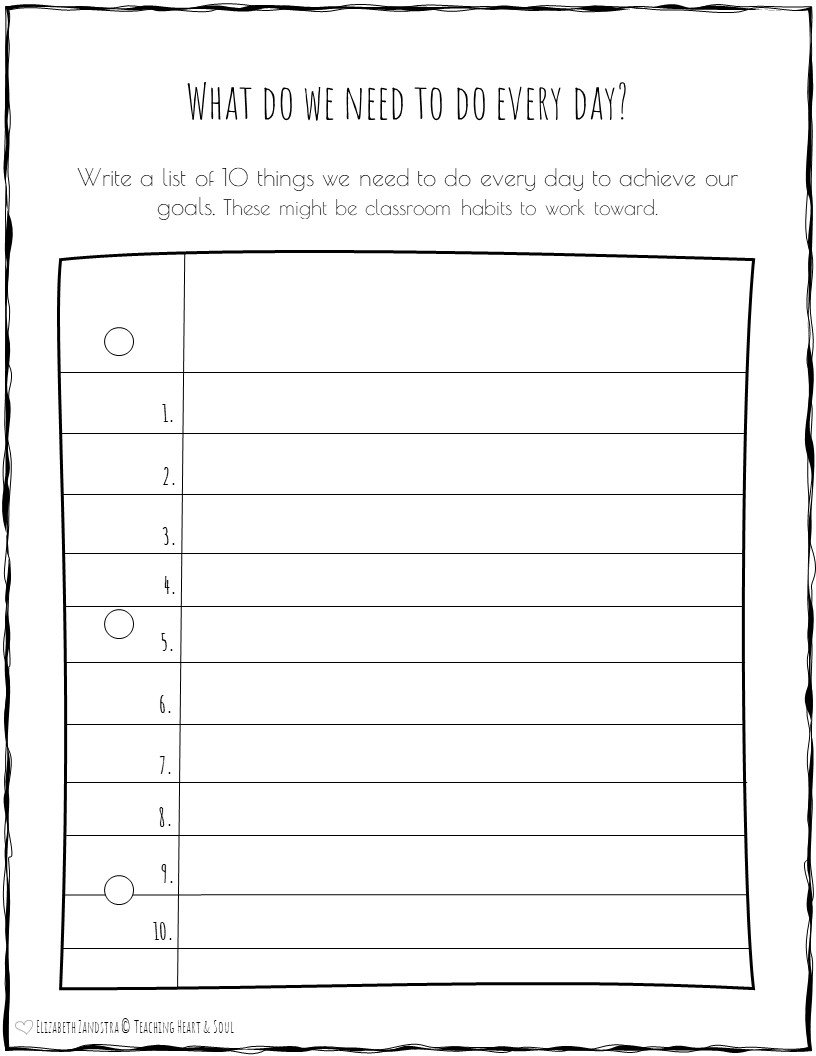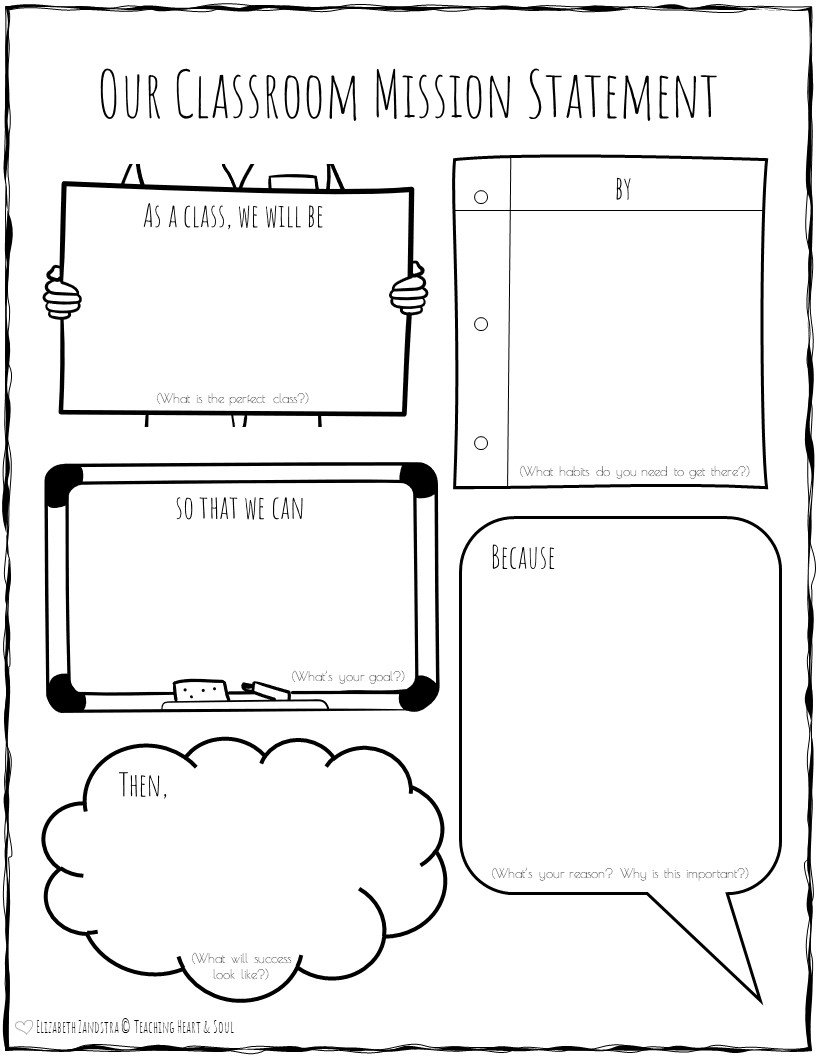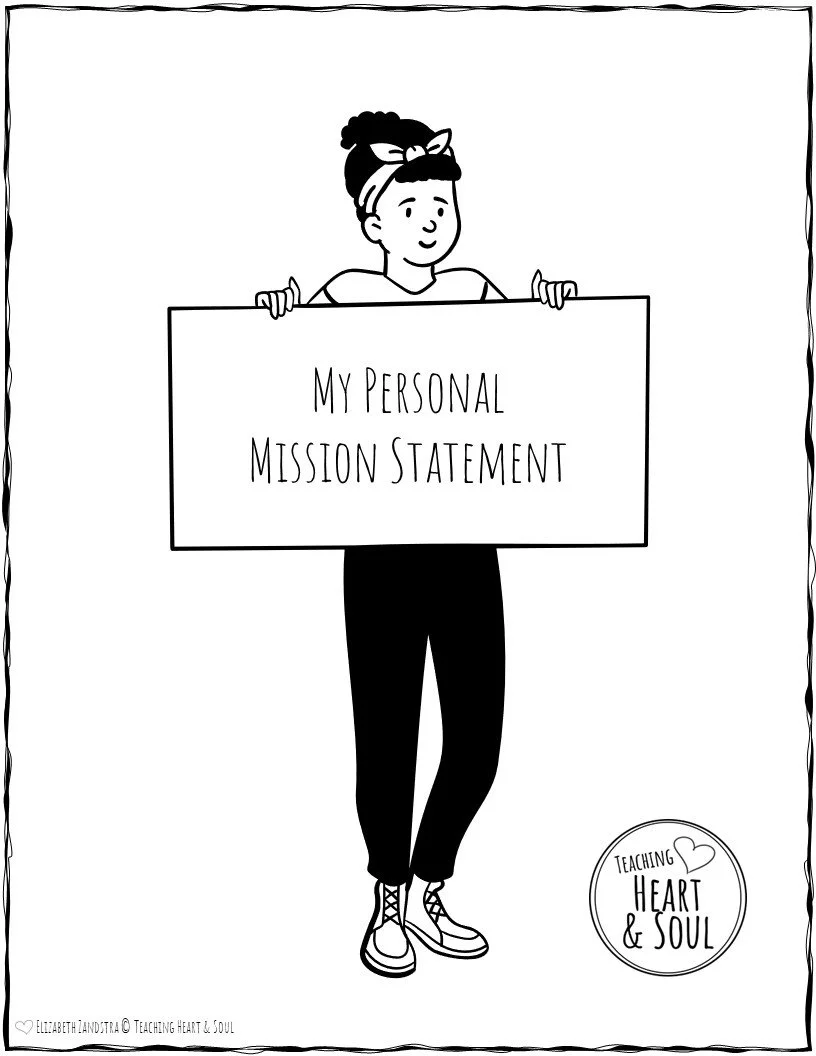Elementary Classroom Mission Statement
Some of us have this dream of what our classroom could look like. We walk by a veteran teacher’s classroom and wish our students would listen that well. We stroll past that pinterest-perfect classroom and wish we were that creative.
Our kids might have similar ideas of what their perfect class would look like. Maybe they’re thinking more of a patient teacher or more engaging lessons.
Although we may have ideas of what the perfect classroom would look like, we rarely see these ideas to fruition. Sometimes we lack the time or the tools. Other times we get a particularly difficult or chatty class. But it could be that we’re just lacking a little direction.
You’re sabotaging yourself if you are working toward this “perfect classroom” with no plan in place. You may even find that you’ve given up. I can’t promise you that this is the perfect solution, and it’s definitely not a quick fix, but a great tool to improve your classroom is to use classroom vision statements.
There are a few steps you will need to follow to create a class mission statement that will improve your classroom.
1. Define Your Roles
First, the type of mission statement you are writing is going to impact what will be in it. When creating classroom mission statements, anything involving home life might be left out.
Even within these vision statements, there is a need for a bit of clarification. What roles will be included in your class mission statement? For example, your students are also children of their own parents. However, for a class mission statement, they will not be thinking of that role.
They will, however, have more than just the role of “student”, or, there will be aspects of this role that can be included. For example, a student may also have the role of learner, teammate, classmate, and leader.
While these roles may not be written into the classroom mission statement, they are important pieces of information to keep in mind to make sure your mission statement stays on track.
2. Think About the Classroom Environment
The way you act in your role is going to impact your environment. Think of a supervisor who micromanages and points out every mistake. Even though those actions are distinct to the person who is acting that way, it impacts the workplace environment.
Working under a boss like that is going to make your environment more stressful and less creative.
Similarly, the classroom environment will change depending on how the teacher and students act.
As with the roles students have in the classroom, the classroom environment goals may not be explicitly stated within the classroom mission statement, but it is an important thing to keep in mind.
When creating your classroom goal, you should think about what you and your students want your classroom environment to be like. Then, as you work out the rest of the class mission statement, you may need to come back and see if everything aligns with or will lead to the classroom environment you agreed you wanted.
3. Define a Model Student
This will be written into your classroom mission statement. The term “model student” can be interpreted a few different ways. What do I think a model student is like? What do I think my teacher wants from me? What do I think other students would say?
Encourage your students to think of qualities they would like to see in themselves within the classroom setting and within the roles you discussed in step one.
If students have a hard time deciding what a model student is, you can prompt them with open-ended questions:
How should a student act when someone is talking to them?
What should a student do when someone else is disobeying the rules?
How can a student make their classroom a better place?
4. Create a Goal
This question can have a huge impact on your priorities in the classroom. One class might prioritize preparation for civil life and do a lot of activities that are more real-life based.
Another class might prioritize high test scores and do a bunch of test prep and learning that are centered around a state test that’s coming up.
A third class may believe that the goal is to foster a love of learning and make sure that learning experiences are as engaging as possible.
It’s up to you and your students to determine the purpose of your class. Everything else should follow that. You may even want to rewrite some of your answers for what a model student is to fit with the class goal.
5. Determine Your Core Values
This is going to be different for each individual in your classroom. Some students may come from religious backgrounds, while others will not. Your students have been raised differently and have different experiences which will impact what they value as well.
This might be an interesting conversation based on which direction your students go with it. Keep coming back to things that are universal that your students can agree on.
Again, go back to the roles your students play in the class as well as the classroom environment you would like to facilitate. The answers you decided on there, might help you realize the core values you already have.
6. Envision Success
If you’ve done everything you’ve set out to do, what will your classroom look like? You might consider this section your “excellent example”.
What changes do you want to see in the class if you’re creating your class mission statement halfway through the year.
If it’s the beginning of the year, you can compare it to previous years. Think about classrooms that you thought did well - what did you like about them? Consider classrooms that were difficult to be a part of - what was wrong?
Use this information to help you come up with a description of what your classroom will look like if you are following your class mission statement.
7. Create a List of Habits
What will it take to achieve your goal? You’ve established what success will look like if you and your students live up to your classroom mission statement, but what little things will you need to change to get there?
Some examples are:
Help my classmates
Try my best
Be patient
Do my homework
Read every night
Listen right away
There are a lot of right answers here for what students should do, so make sure each habit you list goes back to the goal you created.
8. Put it together!
Once you have all of the pieces, it’s time to put them all together. This is not a one-and-done deal. Make sure you come back to your class mission statement throughout the year - as students get off-track, when students are achieving their goal, or when you return from winter break.
You can also come back and modify it as needed, although it’s very likely you’ll get through the entire school year without needing to do this.
If you’re looking for more support with classroom management, CLICK HERE to download a FREE eBook or CLICK HERE to read the related blog post.
9. Create Personal Mission Statements
Another thing you can do with this concept is to have your students create their own mission statement. If you have time set aside for character education or something similar, this would be a great activity for that block.
Doing the classroom mission statement together will help your students get a feel for what a mission statement is supposed to look like and they’ll have already worked through the different steps.
Creating a personal mission statement for students is a great way for them to think through what they want to change in themselves and to find personal goals.
Many of the answers and thoughts may be the same, but this process will also help students think through what they want to change and how they can have personal growth.
If you’d like something a little different, check out my blog on SMART goals HERE. There you’ll find a link to free SMART goal templates.
Tips for Creating a Classroom Mission Statement
First, do not rush through this. If you need to take a couple 30-minute sessions to create the entire classroom mission statement, that’s okay!
It’s important that your students feel heard, have time to process their own thoughts, and discuss their answers.
Second, make sure you have plenty of time for discussion. Part of the reason it’s a good idea to have a class mission statement is because it will help hold students accountable. (It’s kind of like a class social contract.) If students do not feel heard or their ideas are being ignored, they are less likely to start following the classroom rules because of this process.
However, if students are very engaged and involved in this process, have the space to speak, and feel like they were a big part of the class mission statement creation; they are much more likely to take student ownership of the classroom culture.
Lastly, make a classroom poster or anchor chart and give your students a copy of the class mission statement to put in their binders to remind them of what the classroom community should look like. Then, refer back to it regularly.
Gently remind students what a model student looks like.
Give students opportunities to build their good habits.
Talk about the core values and what they look like.
Encourage your students as they get closer to achieving success.
The more you refer back to your classroom mission statement, the more likely it is that your entire class will be successful.



